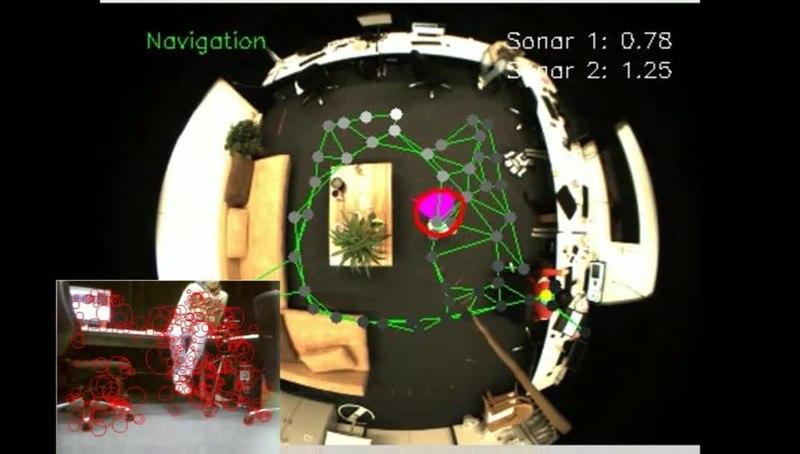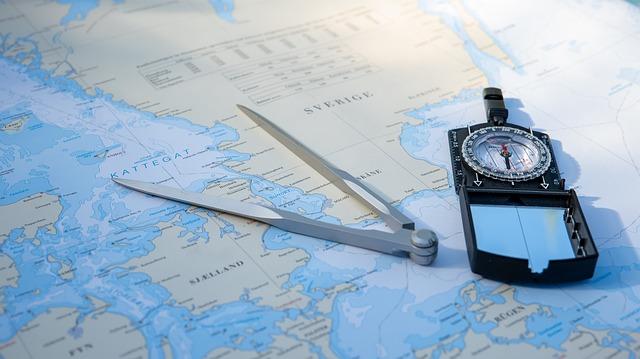In an era where technology seamlessly integrates into our daily lives, the once-futuristic vision of autonomous robots navigating complex environments has become a tangible reality. Welcome to the fascinating realm of real-world navigation tests, where cutting-edge robotics meet the intricacies of sophisticated floor plans. As architects and urban planners design increasingly multifaceted spaces, the challenge for robots is not merely to traverse these environments but to understand and interact with them in meaningful ways. From bustling office buildings filled with winding corridors to dynamic residential layouts, this article delves into the methodologies employed by robots to tackle navigation challenges. We’ll explore the innovative technologies and strategies that empower these machines to make sense of their surroundings, ensuring they can efficiently and safely maneuver through the labyrinth of modern architecture. Join us as we uncover how robots convert complex spatial puzzles into pathways of precision, redefining what it means to navigate in the world around us.
Exploring the Challenges of Navigating Intricate Floor Plans
Navigating intricate floor plans presents a myriad of challenges for robots, each requiring an adept approach to overcome obstacles and make informed decisions. Dynamic environments, characterized by shifting spaces and unpredictable elements, complicate the task further. To equip robots with the necessary skills, developers often employ various strategies, including:
- Advanced Mapping Techniques: Robots must create and update maps in real-time.
- Sensors and Feedback Loops: Utilizing LIDAR and cameras for obstacle detection.
- Path Planning Algorithms: Implementing A* or Dijkstra’s algorithm to find efficient routes.
- Machine Learning: Adapting to new environments by learning from previous experiences.
Moreover, communicating with users in real-time while maneuvering through complex layouts is essential. This requires efficient processing capabilities along with smooth interaction protocols. A closer inspection of the types of technology and strategies used reveals a diversity in approaches. For instance, consider the following table which illustrates some common methods and their benefits:
| Method | Benefit |
|---|---|
| SLAM (Simultaneous Localization and Mapping) | Enhances navigation accuracy in real-time. |
| Fuzzy Logic Systems | Improves decision-making under uncertainty. |
| Multi-sensor Fusion | Combines data for a holistic understanding of surroundings. |
| Reinforcement Learning | Allows robots to learn optimal navigation strategies over time. |

Technological Innovations Shaping Robotic Navigation Strategies
Recent advancements in sensor technology and artificial intelligence are revolutionizing how robots navigate complex environments. High-resolution cameras, LIDAR systems, and ultrasonic sensors allow robots to create detailed maps of their surroundings, enabling them to identify obstacles and make real-time decisions. These innovations facilitate simultaneous localization and mapping (SLAM), allowing robots to dynamically update their understanding of the floor plan as they move. This capability is vital for operating in unpredictable environments such as busy offices or homes filled with furniture and humans.
The integration of machine learning algorithms enhances robotic navigation by enabling robots to recognize patterns and predict the behavior of their environment. By analyzing vast amounts of data, these algorithms help robots differentiate between various types of obstacles and adjust their navigation strategies accordingly. Key technological drivers influencing this evolution include:
- Adaptive Pathfinding: Algorithms that optimize routes based on real-time environmental changes.
- Multi-Robot Coordination: Systems that allow multiple robots to communicate and collaborate when navigating shared spaces.
- Depth Perception: Utilizing stereo vision and LIDAR for improved distance measurement and obstacle detection.
| Technology | Functionality |
|---|---|
| SLAM | Maps environment and tracks location simultaneously. |
| Machine Learning | Predicts and adapts to dynamic changes in the environment. |
| LIDAR | Provides precise 3D mapping for obstacle detection. |

Evaluating Performance: Key Metrics for Success in Real-World Scenarios
As technology progresses, evaluating the performance of robots in navigating complex floor plans has become crucial for developers and researchers. A variety of metrics can provide a comprehensive understanding of a robot’s efficacy in the real world. Key performance indicators (KPIs) include:
- Path Efficiency: Evaluation of the shortest possible route taken by the robot against the ideal path.
- Obstacle Avoidance: Analyzing the robot’s ability to identify and interact with unexpected barriers.
- Time Taken: The total duration from start to goal, revealing operational speed.
- Energy Consumption: Assessment of battery usage against the distance traveled and tasks completed.
In implementing a structured evaluation framework, it’s vital to consider how various factors can affect outcomes. For instance, environmental complexity, including the arrangement of objects and the size of the space, warrants specific attention. To illustrate the importance of consistent benchmarking, the following table summarizes typical success rates across different scenarios:
| Scenario | Path Efficiency (%) | Average Time (min) | Energy Used (Wh) |
|---|---|---|---|
| Simple Layout | 85 | 2 | 10 |
| Moderate Complexity | 75 | 5 | 15 |
| High Complexity | 60 | 10 | 25 |

Practical Recommendations for Enhancing Robot Navigation Capabilities
To elevate the navigation abilities of robots in intricate environments, several tactics can be employed. Firstly, mapping techniques like Simultaneous Localization and Mapping (SLAM) enhance a robot’s understanding of its surroundings. By continuously updating its map while determining its position, robots can maintain accuracy in dynamic settings. Additionally, integrating sensor fusion can significantly expand a robot’s perception. Combining data from cameras, LIDAR, ultrasonic sensors, and others ensures that the robot can grasp a more comprehensive view of obstacles and pathways.
Moreover, algorithmic improvements play a pivotal role in optimizing robot navigation. Utilizing advanced pathfinding algorithms such as A*, Dijkstra’s, or even incorporating machine learning models can help in anticipating environmental changes and adjusting routes in real time. Establishing a protocol for environmental feedback is also crucial; by allowing robots to learn from past navigation experiences, they can adapt to similar scenarios more efficiently. Below is a simple overview of suggested enhancements:
| Enhancement | Description |
|---|---|
| Mapping Techniques | Utilize SLAM for accurate positioning and environmental mapping. |
| Sensor Fusion | Integrate multiple sensors to improve environmental awareness. |
| Pathfinding Algorithms | Implement algorithms to optimize navigation routes dynamically. |
| Environmental Feedback | Allow robots to learn from navigation history to enhance future performance. |
In Summary
In conclusion, as we stand on the precipice of a technological revolution, the way robots navigate complex floor plans offers a fascinating glimpse into the future of autonomous systems. The real-world navigation test not only highlights the remarkable capabilities of robots but also underscores the challenges they face in adapting to ever-evolving environments. As researchers continue to innovate and refine algorithms, we can expect advancements that will enable robots to traverse intricate spaces with the agility and precision of experienced human navigators. The journey from structured lab settings to dynamic real-world applications is both arduous and exhilarating, promising a future where humans and robots coexist seamlessly. As we witness the continued evolution of robotic navigation, the exploration of complex floor plans might just be the first chapter in a larger narrative of technological harmony and collaboration. The question remains: what will these advancements mean for our daily lives, and how will they reshape our interactions with the world around us? Only time will tell.




